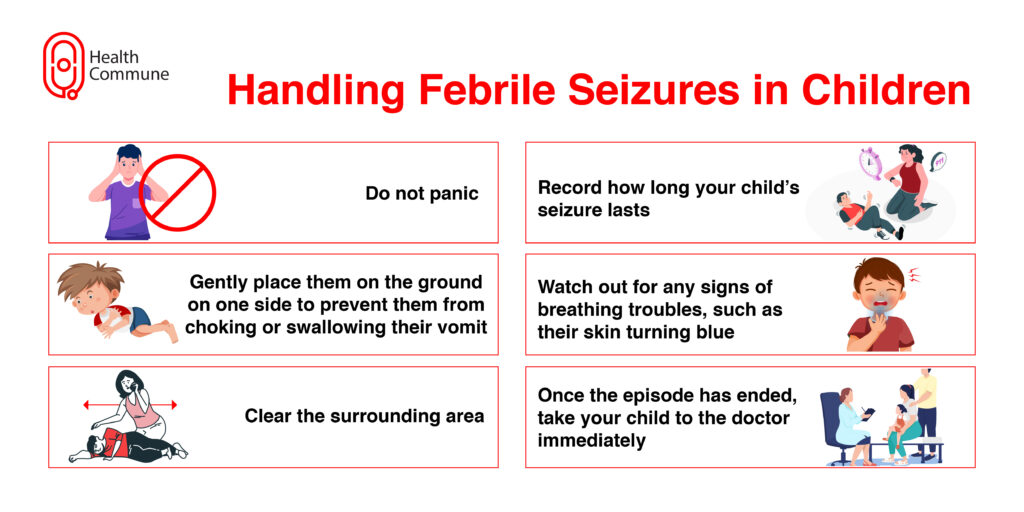What are febrile seizures?
Febrile seizures are fits that occur in children with high fever. It is most commonly seen in kids between 6 months and 5 years.
At what temperature do febrile seizures occur?
What are the causes of febrile seizures?
This condition is common in children, especially those with a positive family history. The kids are usually healthy, with no prior episodes of fits or underlying brain infections. Fever is generally associated with:
- Minor upper respiratory tract infections
- Gastroenteritis
- Viral fever with rash
- Bacterial infections
- Malaria
- Post-vaccination

What are the different types of febrile seizures?
They can be of the following types:
- Simple febrile seizures: These last for less than 15 minutes and only occurs once in 2 hours
- Complex febrile seizures: These last for more than 15 minutes and can occur multiple times. These are more commonly seen in children under one and a half years or those with a family history of the disease
Is my child at risk of getting febrile seizures?
Your child may be at a greater risk if:
- They are under 1 year of age
- You have someone in your family who suffered from this condition
What are the symptoms of febrile seizures?
Your child may be showing the following symptoms:
- Generalised fits, shaking or twitching of the entire body
- Fainting or losing consciousness
- Rolling their eyes
- Vomiting
- Passing urine or stools, which can soil their clothes
What should I do if my child gets febrile seizures?
If your child experiences an episode:
- Do not panic
- Gently place them on the ground on one side to prevent them from choking or swallowing their vomit
- Clear the surrounding area
- Record how long your child’s seizure lasts
- Watch out for any signs of breathing troubles, such as their skin turning blue
- Once the episode has ended, take your child to the doctor immediately
What should I avoid doing when my child is having a febrile seizure?
Some important things to keep in mind, especially if this is your child’s first episode include:
- Do not hold or restrain your child
- Do not put anything, including any medicines (tablets or syrups) in their mouth, as this can lead to choking or tongue biting
- Do not give them any other medicines even after the episode stops, unless specifically prescribed by their doctor
- Do not delay taking them to the hospital
How are febrile seizures diagnosed?
Your child’s doctor can diagnose this condition by taking a detailed history of the symptoms. These include asking the following questions:
- Whether this was your child’s first febrile episode
- How long the episode lasted
- What other symptoms your child experienced
- Neurological symptoms, such as headaches, neck stiffness, vomiting etc.
- History of any recent vaccination
- If you or any of your family members experienced seizures as a child
- Other details that can confirm the underlying source of infection
In simple cases, such as post-vaccination seizures, no further investigations are required. In other cases, your doctor will try to find the source of your child’s fever which require investigations such as –
- Blood testing
- Urine testing
- Lumbar puncture, where the doctor inserts a tiny needle into your spine to retrieve cerebrospinal fluid, which is then sent for various tests. This is usually done if meningitis is suspected or if your child is not vaccinated with the meningococcal vaccine
- Electroencephalogram (EEG), a test that measures the electrical activity of the brain using electrodes
How are febrile seizures treated?
Are there any complications of febrile seizures?
Can I prevent my child from developing febrile seizures?
While the condition cannot be prevented, there are some measures you can take to bring down your child’s fever. These include:
- Giving paracetamol to your child. Do not give aspirin
- Tepid sponging, where you can take a small towel, dip it in lukewarm water and squeeze it dry, and gently apply it on your child’s forehead, underarms and groin area
- Ensuring that you do not cover your child in blankets





